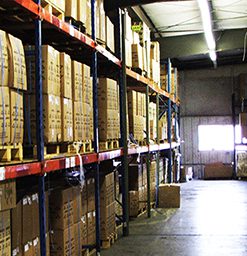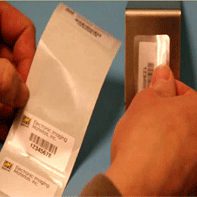Need to track inventory? EIM’s inventory FIFO Labels can help!
Fe, Fi, Fo, Fum,
I smell the blood of an Englishman,
Be he living, or be he dead,
I’ll grind his bones to mix my bread!
Every time we think about FIFO―the method of organizing and manipulating data relative to time and prioritization―we can’t help but get this classic fairy-tale poem stuck in our heads! But don’t worry; we’re not going to talk about any crazy labels that are being used for a new bread recipe calling for the ground-up bones of an Englishman! We have been known to provide labels for some pretty bizarre applications, but not THAT bizarre!
 The FIFO we’re talking about here is an acronym used among various businesses and computing systems, standing for “First In, First Out.” Most commonly it is used as an accounting method for costing inventory whereby the first items that go into inventory are also the first ones used or sold. FIFO is also sometimes used to describe how a scheduling program works in an operating system designed to avoid inventory demand conflicts. It sorts every process (or item in a queue) in the order that the processes (or items) initially arrived. (Think of the printer queue on your computer.)
The FIFO we’re talking about here is an acronym used among various businesses and computing systems, standing for “First In, First Out.” Most commonly it is used as an accounting method for costing inventory whereby the first items that go into inventory are also the first ones used or sold. FIFO is also sometimes used to describe how a scheduling program works in an operating system designed to avoid inventory demand conflicts. It sorts every process (or item in a queue) in the order that the processes (or items) initially arrived. (Think of the printer queue on your computer.)
Another important way to think about FIFO is in terms of a product’s shelf life. Envision a product like milk; if a grocer filled their milk coolers from the front, the milk which is about to go bad would be pushed to the back―out of reach―and the newer milk with later expiration dates would be put in the front, readily available. Not a smart move!
Now imagine this process on a much larger scale, like a warehouse. FIFO systems are critical in ensuring that products are stocked correctly to avoid expired shelf-life. Barcode labeling, along with barcode scanners, can be a terrific asset in keeping track of large scale FIFO inventory control operations and help maintain organization and efficiency, along with being user-friendly and time-saving.
FIFO systems and barcodes aren’t just useful in large warehouse settings; imagine their importance in a laboratory or hospital supply room! With various medications, equipment, and medical supplies, the order in which they come in is just as critical to the order in which they go out. Again, barcode labels can help keep this process running effectively and efficiently by allowing the end-user to scan an item’s barcode label as it’s taken from the shelf, which then updates the FIFO system and keeps the operation and queue running smoothly!
One other reason we are writing this article is to remind our customers to use FIFO in keeping track of their label inventories. Labels, too, have a shelf life – generally ranging from six (6) months to two (2) years. If you don’t rotate your inventory to use the oldest labels first, you could potentially apply labels that have gone beyond their warranty.





